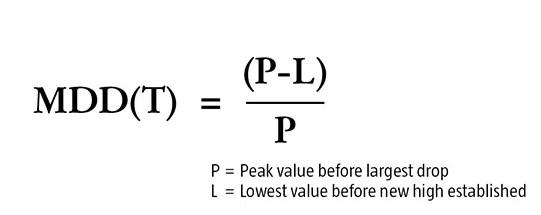What is maximum drawdown?
Maximum drawdown (MDD) is defined as the peak-to-trough decline of an investment during a specific period. It is usually quoted as a percentage of the peak value, making it a key indicator of risk during market downturns. This metric helps investors assess how much they could potentially lose from the highest point of their portfolio’s value to its lowest.
There are two primary ways to calculate maximum drawdown:
Absolute returns: Useful for identifying strategies that minimize losses during market declines, such as low-volatility strategies.
Relative to a benchmark: Useful for identifying strategies that show steady outperformance over time compared to an index.

Active Quant: finding alpha with confidence
Blending data-driven insights, risk control and quant expertise to pursue reliable returns.
Why does maximum drawdown matter?
Consider this example: Two strategies might have the same average outperformance, tracking error, information ratio and volatility, but their maximum drawdowns compared to the benchmark can be very different.
Strategy 1: Achieves monthly performance of 1%, -0.5%, 1%, -0.5% and so on versus the benchmark.
Strategy 2: Achieves an outperformance of 1% each month during the first half of the sample, but an underperformance of 0.5% each month during the second half of the sample.
While both have the same average outperformance, most investors would strongly prefer Strategy 1. Why? Because it experiences a lower and shorter maximum drawdown, proving greater peace of mind during turbulent times.
How we use maximum drawdown
At Robeco, maximum drawdown is one of the key statistics for evaluating our quantitative strategies and for deciding on the introduction of new variables in our models.
Discover the value of quant
Subscribe for cutting-edge quant strategies and insights.

















